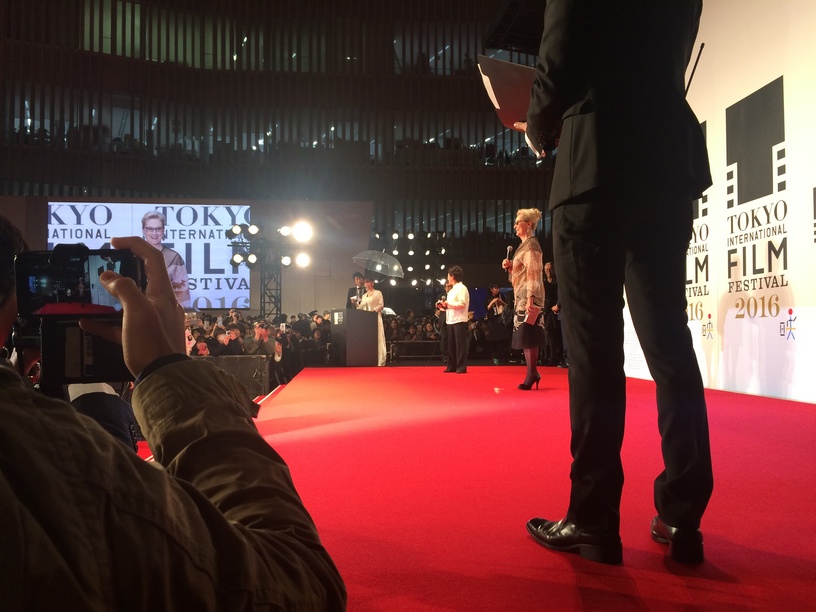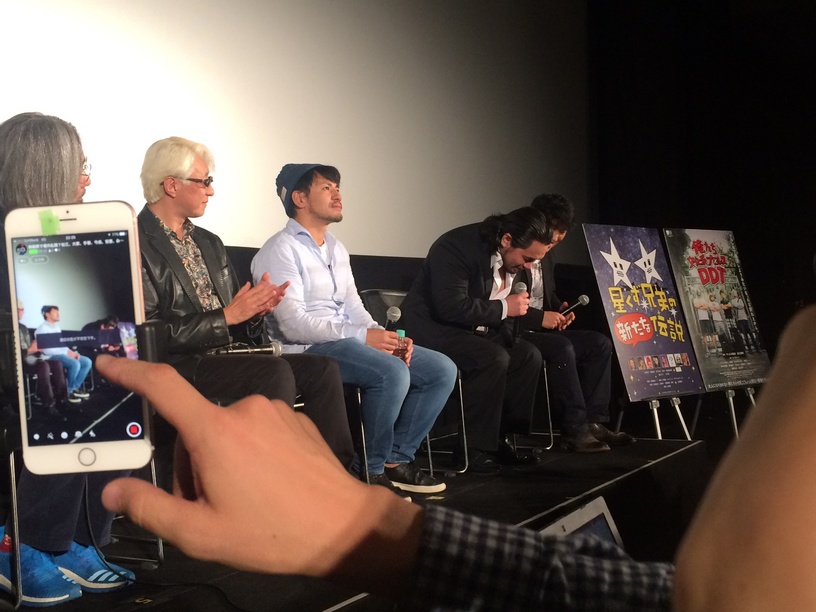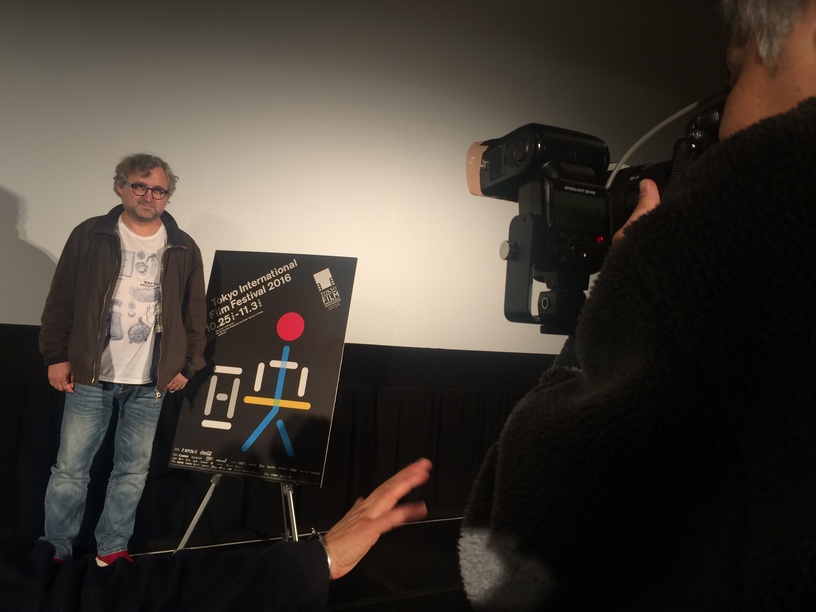REWIND FEATURE: Tokyo International Film Festival 2016
TIFF 2016 - Part Six: Behind the scenes of the Tokyo International Film Festival 2016

Festivals are a wonderful way to showcase a variety of works - whether a film festival, music festival, food festival or whatever noun you attach as a prefix, there are bound to be fans out there. And with the Tokyo International Film Festival touted as being the biggest international film festival in Asia, expected are filmmakers and stars to arrive, thousands of film fans gathering to see the films and meet the makers, as well as getting a deeper appreciation for the artform. But with such a large scale, it must be a bigger task to gather and organize everything together. Now, I’m not part of the organizing staff, so aspects about negotiating the deals with films for entry, the filmmakers negotiating with distributors, and those points will not be discussed since I have no clue how they were done. This behind the scenes look is more about what I saw and what I experienced as a journalist - seeing things that the normal patron would not know about or might not even think about.
Now first of all, people that are part of the media are allowed to see the films for free. I can already picture your faces of jealousy with that portion. We are allowed into special P&I screenings (press & industry). The press can watch and review the films (and believe me, it is difficult to write down notes in a dark theater, but I did it!) while industry staff are there for possible acquisitions of the films for distribution. For these screenings, I’ll have to admit, I saw people leaving mid-screening or people sleeping through the film. Now it does seem like a complete waste, but I have to think that some of these people are watching 5 or 6 movies in one day possibly one after the other and are just plain tired. The people leaving may have decided that the movie was not to their company’s liking for acquisition for distribution. It may seem disrespectful but it isn’t. This is not a screening with the standing ovation and excited faces of moviegoers. Those screenings are held at another time.
For the “premiere” screenings - where the paying moviegoers enter with reserved ticketing and occasionally with a filmmaker and star Q&A or stage greeting, the audience will notice that the entire first row is always completely empty. Well, those seats are specifically for the media. If there is a stage greeting before the movie starts, we the media sit in those seats, take pictures or video or the talk and if it is a Q&A following the film, the media is there for the same. So a small catch - media are allowed to watch these audience screenings, but since it is reserved seating we have to stand in the back. Most media folk are not going to stand for two hours or more if we can catch a screening at another time, so there were a few times that I had gone to a Q&A for a film I hadn’t seen - and most likely other media staff were the same. For the Q&A, here is the non-glamorous part for the media: media have to check in about 30 minutes before the event and just wait in a stairwell or a hallway. A bunch of people standing or sitting along the steps. Not a lounge, not a room, but a stairwell. We are later led down corridors, other halls, until we are led into the theater - which sometimes we had to circle back because the staff took us to the wrong place, but that happens with a huge location.

Smartphones for video and photos were previously not allowed by media, but now it’s become a standard.
I mentioned a VIP room - there actually was a VIP lounge for media and for the filmmakers. Wi-Fi, a small bar for snacks and soft drinks, and just a place to sit back and chat to various industry people. I was able to chat with director Ivan Andrew Payawal and actors Bela Padilla and Theo Reyes or the film “I America”, with Alankrita Shrivastava the director of the award winning “Lipstick Under my Burkha”, with the beauty queen Reiko Sugioka, and lots of other media folk. The crew of “I America” were actually doing an interview with someone with an audio recorder one by one when I introduced myself. I asked who they were interviewing for and they said they were not exactly sure but probably a British podcast. They’ve been interviewed so many times by so many people they’ve lost track, which is quite understandable. I chatted with them about their film, my positive reaction to it, and I got some behind the scenes tidbits from them, during our 10 minute or so talk. I also mentioned that I used to live in The Philippines when I was young, and how I am also half American like the main character of the film so the idea of cultural identity was something I could easily relate to. But enough about me! When I met Shrivastava she was sitting alone and I decided to talk to her since I recognized her. She offered me a seat and I realized she had a sore throat which was a shame - much different from her voice from the Q&A just a few days prior. We talked about Indian cinema, female filmmakers in general and how India doesn’t preserve its own films very well. Being a DVDCompare staff, I did ask her about if she was thinking about Blu-ray, DVD, or streaming - special features and such. She admitted that it was not on her mind at all - it was all about getting the film made and now getting the film screened. I gave my thoughts on how I love special features - commentaries, interviews, making of documentaries just as much as the film - maybe more than the film at times. Did it spark something for her to think about for home media releases? Possibly so! When I saw her again at the closing day, her sore throat was not getting better which was a shame. Whether it was her or it was by coincidence, I happened to have a sore throat a few days later and could not go to the office. Totally worth the 20 minute conversation with her!

Make sure to take enough cameras and with enough extra battery life
I’ve mentioned previously that not all was perfect and smooth - the first day the media staff had no Wi-Fi available. Hugh Grant and Martin Scorsese who were scheduled to attend couldn’t make it. The online ticket system crashed on the first day which caused quite a mess. I heard staff behind the scenes scrambling to find interpreters - since everything was translated into English and Japanese and sometimes they were understaffed. Regardless of small misses like that, I’m sure there were much more that I did not see. In better regards, one major positive point was that all screenings this year were in one area - in Roppongi. Last year they divided screenings between Roppongi and Shinjuku where they built the new Toho Cinemas featuring the giant Godzilla head. Looking at trains, technically there is a train that runs directly between Roppongi and Shinjuku in 12 minutes - the Oedo line. As great as that sounds, the Oedo line platform in Roppongi is the deepest train platform in Tokyo which takes quite a long walk from the theater to the station platform - probably 10 minutes. For Shinjuku, the Oedo line platform is on the complete opposite side of Shinjuku station from the movie theater. And being the busiest station in the world, even knowing exactly which direction to walk to get to the Toho Cinemas area will take at least 10 minutes. So people needed more than 30 minutes to get from one cinema to another. Gladly they didn’t do this for this year. Scheduling was very easy - able to be done online with daily updates with full information in English and Japanese. The volunteer staff which were mostly university students were very good and most I assume were proficient enough in English - I don’t know exactly since I only spoke Japanese to them. It was also nice that they recognized me after going there everyday. Instead of having to guide me the same information each day, they just said “Please wait in the usual area”. So yes, the stairwell…
The hundreds of staff and volunteers did an amazing job this year and I’m looking forward to next year’s festival - and next time I will make sure to sign up for the after party. Since I didn’t, I was not able to get trashed with Kiyoshi Kurosawa and Makoto Shinkai as I had hoped… There is still hope for next year then!
